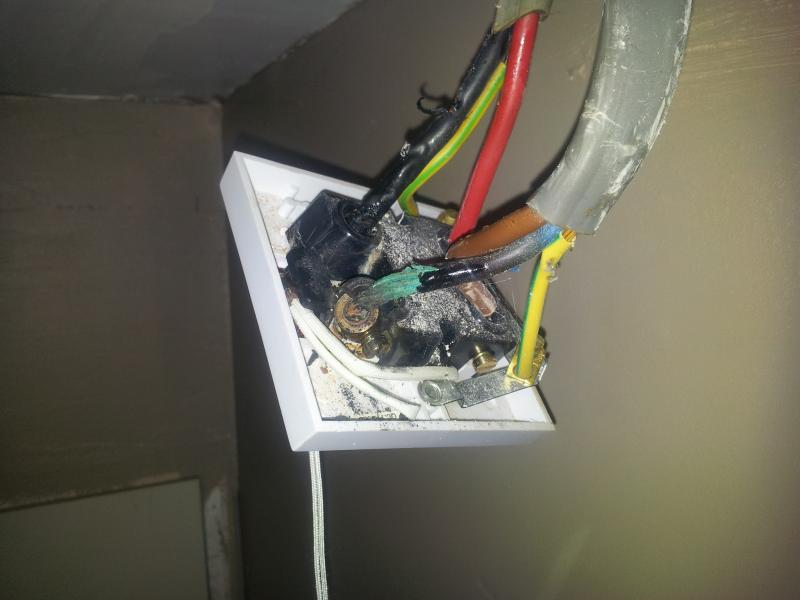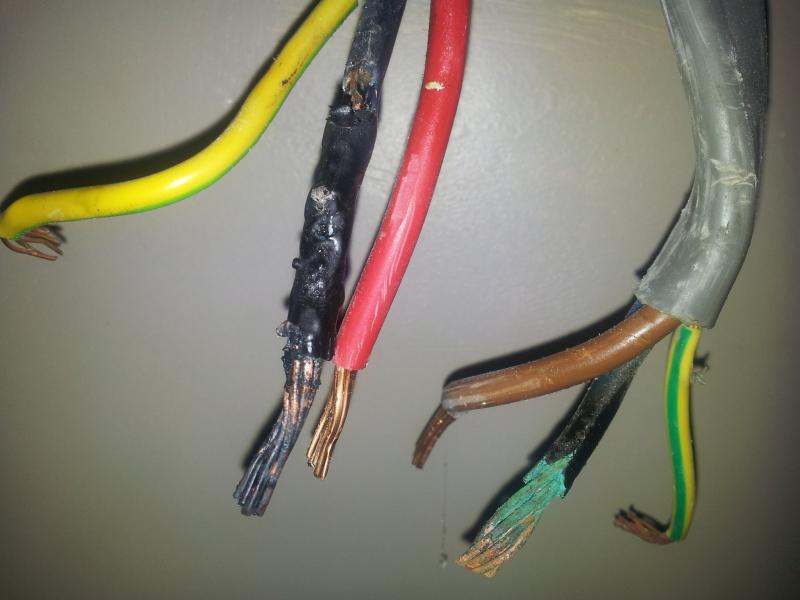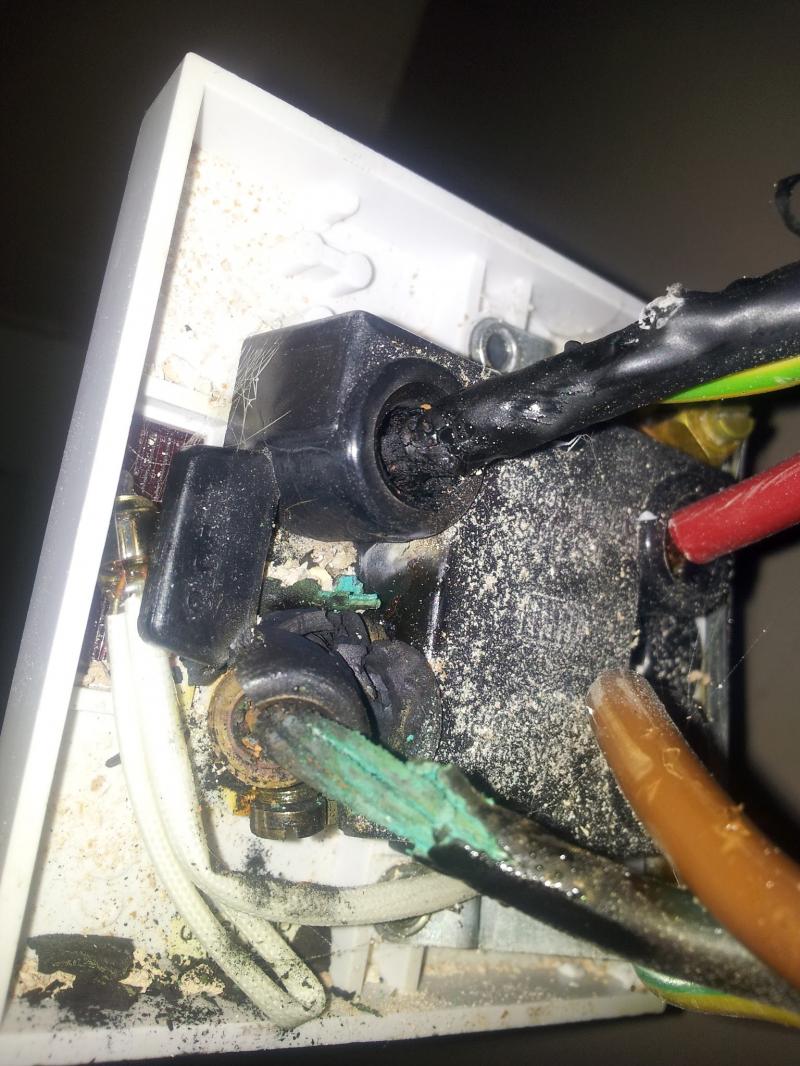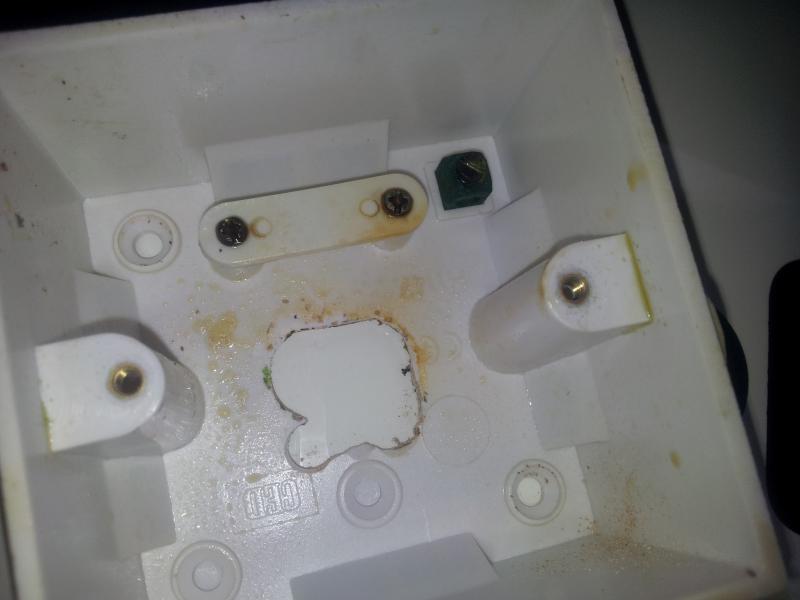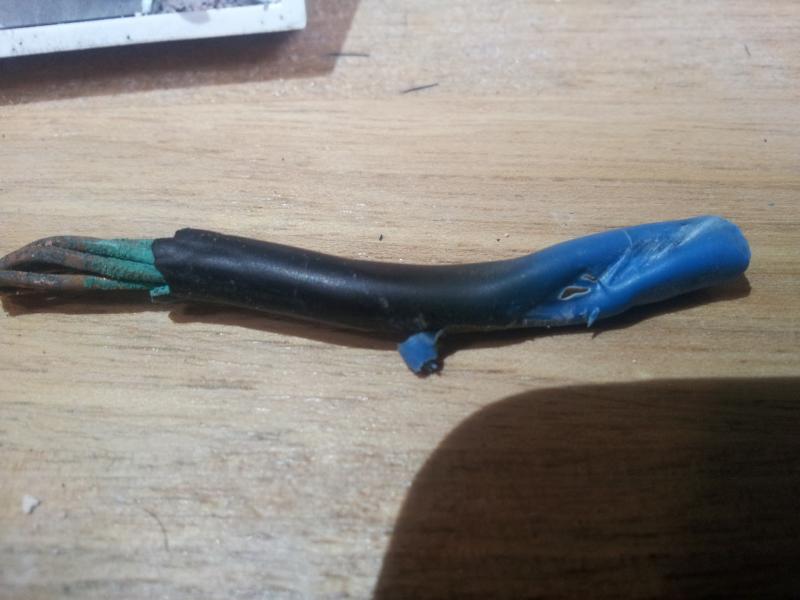This is about 18 months old. Cable is 10mm and the shower is 8.5kW. Switch is an MK 50A
Can anyone give a likely cause of this. I don't think it is overloading, and I am curious as to the corrosion and the trace of some liquid in the pattress.
There is no evidence of rodents in the loft, and no access to the pattress anyway. If condensation why the staining and smell
But did the corrosion come first or did insulation come off first
Insulation was sound and right up to the connector when fitted
1. Here is the switch when dropped from the ceiling. The white bits are just plaster dust done when removing.
The black/red cable is the supply from the CU, and the new blue/brown is the load to the shower
The shiny bits are some sort of liquid, although there is no evidence of any cause in the loft above
The load neutral insulation is heat damaged, but also has mechanical damage
The blue neutral has corrosion and the insulation has come away from the block - the insulation was there when fitted
All connections are very tight
2. Cables in more detail
3. Cables in the fitting
Note the liquid
4. Inside the ceiling pattress
The liquid is yellow/brown, and it smells. Note corrosion to earth block and cable screws
5. Corrosion to load neutral
Also it seems mechanical damage and loss of insulation - this was just hidden by the outer sheathing
Can anyone give a likely cause of this. I don't think it is overloading, and I am curious as to the corrosion and the trace of some liquid in the pattress.
There is no evidence of rodents in the loft, and no access to the pattress anyway. If condensation why the staining and smell
But did the corrosion come first or did insulation come off first
Insulation was sound and right up to the connector when fitted
1. Here is the switch when dropped from the ceiling. The white bits are just plaster dust done when removing.
The black/red cable is the supply from the CU, and the new blue/brown is the load to the shower
The shiny bits are some sort of liquid, although there is no evidence of any cause in the loft above
The load neutral insulation is heat damaged, but also has mechanical damage
The blue neutral has corrosion and the insulation has come away from the block - the insulation was there when fitted
All connections are very tight
2. Cables in more detail
3. Cables in the fitting
Note the liquid
Cables in fitting
- ^woody^
- 1
Shiny bits are liquid<br><br>Bottom corroded cable is the neutral on the load side
4. Inside the ceiling pattress
The liquid is yellow/brown, and it smells. Note corrosion to earth block and cable screws
Liquid in ceiling pattress
- ^woody^
- 1
Smelly liquid, does not seem like water and corrosion to earth point
5. Corrosion to load neutral
Also it seems mechanical damage and loss of insulation - this was just hidden by the outer sheathing


